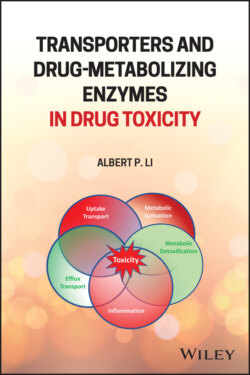Читать книгу Transporters and Drug-Metabolizing Enzymes in Drug Toxicity - Albert P. Li - Страница 17
1.4.1 A Comprehensive Approach to Safety Evaluation in Drug Development
ОглавлениеWhile the conventional preclinical and clinical safety evaluation are essential to the assessment of drug safety, additional considerations are needed to avoid the occurrence of idiosyncratic drug toxicity. I have previously proposed that drug safety assessment requires a comprehensive, multidisciplinary approach (8, 9) with input from pharmacologists, toxicologists, epidemiologists, population geneticists, and especially drug metabolism/pharmacokinetics (DMPK) experts to provide insight toward the possible risk factors discussed above.
Key parameters to be considered for drug safety evaluation based on this comprehensive approach include the following: (i) Pharmacology: Possible toxicity due to drug–target interactions, including interactions with unintended molecular targets, or with molecular targets in unintended organs. (ii) Chemistry: Chemical scaffolding and side chains with safety concerns. (iii) Toxicology: Toxicity in animals in vivo, and in relevant animal and human cells in culture. (iv) DMPK: Safety concerns due to toxification or detoxification, organ distribution, clearance, and pharmacokinetic drug–drug interactions. (v) Risk factors: Physiological, environmental, and genetic factors that may enhance a patient's susceptibility. It is proposed that this integrated, multidisciplinary approach to safety evaluation may enhance the accuracy of the prediction of drug safety and thereby the efficiency of drug development (8, 9).
